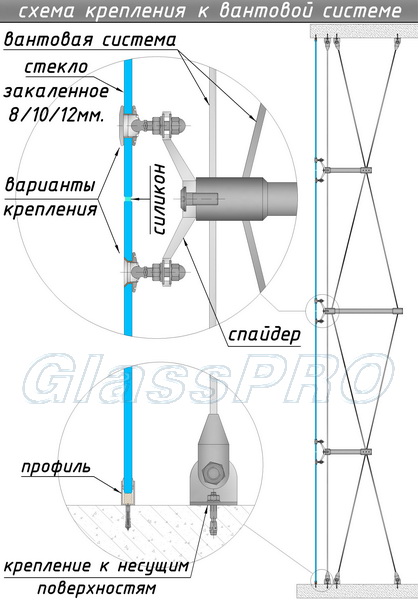










Mounting spider glazing to a cable-stayed system:
This assembly diagram of the “spider” glazing structures forms the following sequence:
glass → hinge → bracket → connector → cable-stayed system (see picture) ↓

The “industrial” appearance of this system can be attributed to the advantages or disadvantages solely in terms of design in relation to a particular building, its interior or exterior.
The general concept of a cable-stayed system can include a complex of such structural elements as cables, rods, pins, tensioners, spacers, couplings, connectors, sleeves, etc. The selection of the system set is made on the basis of the architectural design and technical calculations. It should be noted that this system presents extremely high demands concerning the supporting structures of the building, as they are affected by wind, snow loads, the weight of the glazing itself, and the weight of the cables. The given mounting concept should be designed exclusively along with the building design and cannot serve as an alternative to a standard stick system curtain wall.
When comparing the installation scheme of “spider” glazing on a cable-stayed system with other options (on capital structures, metal posts or glass fins), we can highlight the following main advantages and disadvantages:
Advantages:
- unique “industrial” design;
- ideal for “Dual Skin” facades;
- high degree of transparency and light transmission.
Disadvantages::
- a highly complex design, structural analysis and installation;
- additional difficulties arise when arranging glazing on surfaces other than vertical;
- usually the most expensive choice.
![]()
 TM
TM